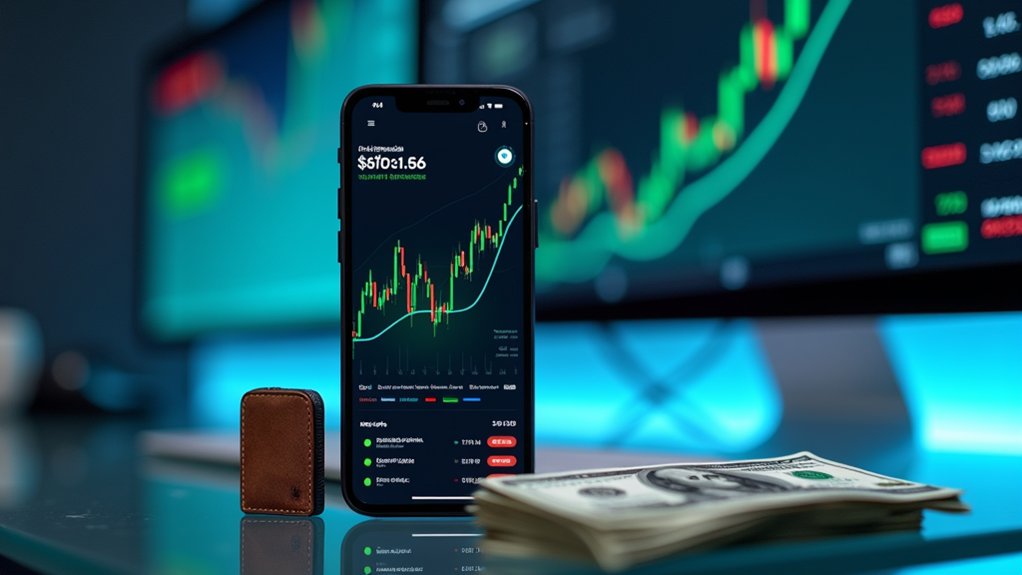Cryptocurrency prices are determined through complex market mechanisms balancing supply and demand interactions. Fixed supply caps, like Bitcoin's 21 million limit, create scarcity value, while circulating token volume affects market liquidity. Regulatory developments, technological advancements, and competitive pressures between projects greatly influence valuations. Market sentiment, driven by media coverage and public endorsements, often triggers short-term price movements independent of fundamentals. The interplay between institutional adoption and technological utility forms the foundation for understanding cryptocurrency's distinctive valuation patterns.

While traditional financial markets operate under well-established valuation models, cryptocurrency prices are determined through a complex interplay of multiple factors that extend beyond conventional economic principles. The fundamental supply-demand interactions form the central price mechanism, with fixed supply caps like Bitcoin's 21 million limit creating significant upward price pressure when demand rises.
Cryptocurrencies defy conventional valuation models, relying on complex factors where fixed supply meets fluctuating demand.
Sudden increases in token circulation or large sell-offs by major holders temporarily flood markets with excess inventory, pushing valuations downward. Demand factors including institutional adoption, increasing global accessibility, and practical utility in transactions collectively establish a baseline valuation that fluctuates based on trading volume, liquidity conditions, and speculative activity across exchanges worldwide. Machine learning models can identify pricing patterns by analyzing historical data to forecast potential future movements with varying accuracy.
Regulatory developments exert substantial influence on cryptocurrency markets, with positive policy decisions like SEC ETF approvals triggering price surges, while restrictive measures such as China's mining ban precipitate market-wide corrections. The considerable variance in regulatory approaches across jurisdictions creates fragmented global market conditions, where clarity on taxation and legal status typically encourages institutional investment, stabilizing long-term price action despite short-term volatility caused by policy uncertainty.
Technological advancements, including network upgrades, security implementations, and mining adjustments like Bitcoin's halving events, directly impact a cryptocurrency's utility and scarcity, consequently affecting its market valuation. Modern investors increasingly leverage dollar-cost averaging as a strategic approach to mitigate cryptocurrency's inherent volatility while building long-term positions.
Market sentiment and social factors constitute another critical dimension of price determination, with media coverage, social media discourse, and public endorsements capable of initiating significant price movements independent of fundamental changes. The Fear & Greed Index serves as a barometer for investor psychology, often predicting imminent market shifts as sentiment cycles between extreme optimism and pessimism. Investors should recognize the speculative nature of cryptocurrency trading, which inherently carries risks of rapid price changes and potential losses.
Competitive pressures within the cryptocurrency ecosystem additionally influence individual asset prices, as capital flows between established projects and emerging alternatives based on technological innovation, developer activity, and perceived use cases. Projects demonstrating clear utility and ecosystem advantages tend to maintain stronger demand during broader market contractions, while those relying primarily on speculative interest experience more pronounced volatility.
Frequently Asked Questions
Can Crypto Prices Be Manipulated by Large Investors?
Cryptocurrency prices can indeed be manipulated by large investors, commonly referred to as "whales," through various tactics including pump-and-dump schemes, spoofing, and strategic placement of sell walls.
Market illiquidity, particularly in smaller cryptocurrencies, amplifies these manipulative efforts, while regulatory gaps across global jurisdictions enable these activities to persist despite increasing oversight.
The psychological factors of fear and greed, combined with media influence and coordinated group actions via social platforms, further exacerbate price vulnerability to manipulation.
How Do Geopolitical Events Impact Cryptocurrency Valuations?
Geopolitical events considerably influence cryptocurrency valuations through multiple transmission mechanisms. Trade conflicts, elections, and regional instabilities trigger immediate market reactions, as evidenced by Bitcoin's 6% drop following U.S. tariff announcements and its surge beyond $100,000 after Trump's pro-crypto victory.
Regulatory decisions stemming from international tensions create lasting valuation impacts, while sanctioned nations increasingly adopt cryptocurrencies to circumvent financial restrictions, thereby altering demand interactions.
The Geopolitical Risk Index correlations further demonstrate how global uncertainties redirect capital flows between traditional assets and digital currencies.
Why Do Altcoins Often Follow Bitcoin's Price Movements?
Altcoins typically mirror Bitcoin's price movements due to Bitcoin's dominant market position, which accounts for over 50% of total cryptocurrency market capitalization.
This benchmark status creates natural correlation, with Bitcoin serving in both the primary valuation standard and main fiat on-ramp for the crypto ecosystem.
Market sentiment surrounding Bitcoin directly influences altcoin valuations, with correlation coefficients often ranging from 0.50-0.90, particularly during pronounced bull and bear cycles, regardless of divergent technological applications or use cases.
Are Crypto Prices Affected by Mining Difficulty Adjustments?
Mining difficulty adjustments influence crypto prices indirectly through their impact on miner profitability, not through direct price correlation.
When difficulty increases, miners face higher operational costs, potentially leading to selling pressure while they liquidate holdings to cover expenses.
However, the auto-adjustment mechanism, which recalibrates approximately every two weeks to maintain block times, creates a self-regulating system where network stability typically prevails despite short-term pressure, unless prolonged unprofitability triggers significant miner capitulation.
How Do Stablecoin Reserves Influence Broader Crypto Market Prices?
Stablecoin reserves function like critical confidence anchors within cryptocurrency markets, with their composition and transparency directly influencing broader asset valuations.
During crises, for instance USDC's $0.87 depeg following SVB's collapse, reserve inadequacies can trigger liquidity crunches across trading pairs and lending protocols, prompting mass sell-offs of other cryptocurrencies.
Conversely, robust reserves maintain market stability, as evidenced by Tether's relative durability despite opacity, demonstrating how stablecoin integrity fundamentally underpins capital flows throughout the entire crypto ecosystem.









